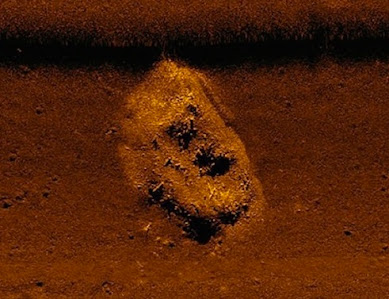 | Details on gold coins found aboard a shipwreck off Colombia provides further evidence that the vessel is the San José, believed to contain a cargo worth billions. Symbols show that the coins were minted in Lima, Peru, in 1707, proving the shipwreck occurred after that date. Hand-struck, irregularly shaped coins known as cobs in English and macuquinas in Spanish served as the primary currency in the Americas for more than two centuries. The Tierra Firme Fleet, commanded by the San José, held the exclusive monopoly on transporting royal treasure. |
 | San José was a 64-gun, three-masted galleon of the Spanish Armada de la Guardia de la Carrera de las Indias. It was launched in 1698. On its final voyage, San José sailed as the flagship of a treasure fleet composed of three Spanish warships and 14 merchant vessels. In June 1708 the galleon was attacked by a squadron of British ships led by commander Charles Wager and sank in battle off Barú Island, just south of Cartagena, Colombia. During the battle, the powder magazines of San José detonated, sending the ship to the bottom. 11 crew members survived, while 600 perished. The ship was laden with gold, silver and emeralds worth billions. The San José has long been called the "Holy Grail of Shipwrecks". |
The San José was located by Colombia’s Institute of Anthropology and History on Nov. 27, 2015 nearly 1,000 feet deep about 16 miles from Cartagena. The type and number of bronze cannons found at the site leaves no doubt that the ship is the San José.
 | It likely had 7 to 10 million Spanish pesos on board at the time of its sinking, similar to its surviving sister ship, the San Joaquín. 
This cannon was made in Seville in 1644. | |
 |
Spain claims the San José is a "ship of state" as it belonged to the Spanish navy when it was sunk and its contents are protected under a UN convention Colombia is not party to. Columbia disagrees, as do indigenous Qhara Qhara Bolivians that claim the riches were stolen from them.
US-based salvage company Sea Search Armada took Colombia to the UN's Permanent Court of Arbitration, seeking £7.8bn, over claims it first discovered the vessel more than 40 years ago and deserves a fair share of the spoils. |
 | The San José will remain on the ocean floor a little longer. Sea Search Armada said it provided coordinates that were crucial to the San José’s rediscovery in 2015. In 2007, Colombia’s Supreme Court ruled that Sea Search Armada had the right to half of any treasure at the site that wasn’t 'national patrimony.' | 
Colombia had dismissed Sea Search as 'greedy treasure hunters'. |
 | A seafloor image of the shipwreck San José. The ship was carrying one of the largest treasures ever lost at sea.
 |  |











No comments:
Post a Comment